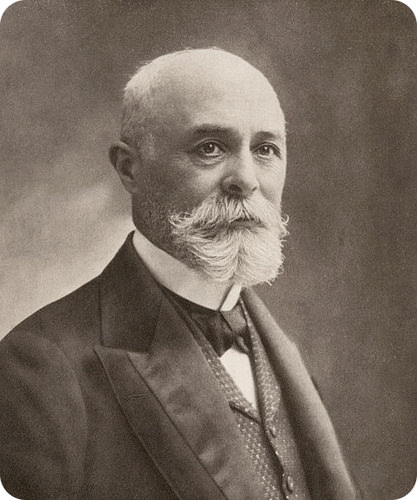放射性
章节大纲
-
The man in this old illustration was an alchemist. Alchemists, who lived during the Middle Ages, were people who strived to turn lead into gold. They tried all sorts of involving lead, but they were never able to produce gold. Today, scientists know that one cannot be changed into another by chemical processes. However, there is a way that some elements can change into others. You’ll find out what it is when you read this article.
::这个古老的插图中的人是一个炼金师。 生活在中世纪的炼金师是努力把铅变成黄金的人。他们尝试了各种铅,但他们从未生产过黄金。如今,科学家们知道一个人不能被化学过程改变为另一个人。然而,有些元素可以改变为另一个人。当你阅读这篇文章时,你会发现它是什么。Elements and Protons
::元素和质子For an of one element to change into a different element, the number of in its nucleus must change. That’s because each element has a unique number of protons. For example, lead atoms always have 82 protons, and gold atoms always have 79 protons.
::一个元素要改变成一个不同的元素,其核心的数量必须改变。 这是因为每个元素都有独特的质子数量。 比如,铅原子总有82个质子,金原子总有79个质子。Q: So how can one element change into another?
::问:一个元素如何改变成另一个元素?A: The starting element must be radioactive, and its nuclei must gain or lose protons.
::A:起始元素必须是放射性的,其核心必须增减质子。Radioactive Elements
::放射性元素Radioactivity is the ability of an atom to emit, or give off, charged particles and from its nucleus. The charged particles and energy are called by the general term radiation . Only unstable nuclei emit radiation. They are unstable because they have too much energy, too many protons, or an unstable ratio of protons to . For example, all elements with more than 83 protons—such as uranium, radium, and polonium—have unstable nuclei. They are called radioactive elements. The nuclei of these elements must lose protons to become more stable. When they do, they become different elements.
::放射性是指原子能够发射或释放有电粒子及其核,有电粒子和能量用一般的辐射术语来调用。只有不稳定的核才会排放辐射。它们不稳定,因为它们的能量过多,质子过多,质子与质子之比不稳定。例如,拥有超过83个质子的所有元素,如铀、放射性和,都有不稳定的核元素。它们被称为放射性元素。这些元素的核元素必须失去质子才能更加稳定。当它们出现时,它们就会变成不同的元素。How Radioactivity Was Discovered
::如何发现放射性Radioactivity was discovered in 1896 by a French physicist named Antoine Henri Becquerel, who is pictured . Becquerel was experimenting with uranium, which was known to glow after being exposed to sunlight. Becquerel wanted to see if the glow was caused by rays of energy, like rays of light or . He placed a bit of uranium on a photographic plate after exposing the uranium to sunlight. The plate was similar to the film that is used today to take X-rays, and Becquerel expected the uranium to leave an image on the plate. The next day, there was an image on the plate, just as Becquerel expected. This meant that uranium gives off rays after being exposed to sunlight.
::1896年,法国物理学家Antoine Henri Becquerel发现了放射性,他被照了照片。Becquerel正在试验铀,铀在暴露于阳光之后会发光。Becquerel想看看这种发光是否由能量射线(如光线或光线)引起。他把铀暴露在阳光之下后,在摄影板上放了点铀。该板与今天用来拍摄X光片的影片相似,Becquerel期望铀在板上留下一个图像。第二天,板上有一个图像,就像Becquerel所期望的那样。这意味着铀在暴露于阳光之后会发出光线。Becquerel was a good scientist, so he wanted to repeat his to confirm his results. He placed more uranium on another photographic plate. However, the day had turned cloudy, so he tucked the plate and uranium in a drawer to try again another day. He wasn’t expecting the uranium to leave an image on the plate without first being exposed to sunlight. To his surprise, there was an image on the plate in the drawer the next day. Becquerel had discovered that uranium gives off rays of energy on its own. He had discovered radioactivity, for which he received a Nobel prize.
::贝克奎尔是一个优秀的科学家,因此他想重复他的说法,以证实他的结果。他把更多的铀放在另一个摄影板上。然而,那天已经变云了,所以他把板子和铀放在抽屉里再试一次。他并没想到铀会先在板上留下一个图像,而后又没有暴露在阳光之下。他惊讶的是,第二天抽屉里有一个板子上的图像。 贝克奎尔发现铀本身就释放了能量光线。 他发现了放射性,为此他获得了诺贝尔奖。Another scientist, who worked with Becquerel, actually came up with the term radioactivity . The other scientist was the French chemist Marie Curie. She went on to discover the radioactive elements polonium and radium. She won two Nobel Prizes for her discoveries.
::另一位与贝克奎尔合作的科学家,实际上提出了“放射性”一词。另一位科学家是法国化学家玛丽·库里(Marie Curie),她接着发现了放射性元素和放射性元素。她因自己的发现获得了两个诺贝尔奖。Summary
::摘要-
Radioactivity is the ability of an atom to emit charged particles and energy from its nucleus. The charged particles and energy are called by the general term radiation.
::放射性是指原子从其核中释放有电粒子和能量的能力,有电粒子和能量称为一般辐射。 -
Radioactivity was discovered in 1896 by Antoine Henri Becquerel when he found that uranium leaves an image like an X-ray on a photographic plate. Besides uranium, radioactive elements include radium and polonium, both of which were discovered by Marie Curie.
::1896年Antoine Henri Becquerel发现铀在照相板上留下像X光一样的图像时发现了放射性。 除了铀外,放射性元素还包括放射性元素和,两者都是由Marie Curie发现的。
Review
::回顾-
What is radioactivity?
::什么是放射性? -
Define radiation.
::定义辐射。 -
Identify some radioactive elements.
::识别一些放射性元素。 -
Explain how radioactivity was discovered.
::解释一下辐射是如何被发现的
Explore More
::探索更多Watch this video about radioactivity and then answer the questions below .
::观看这段关于放射性的录像,然后回答下面的问题。-
If a nucleus is unstable, it eventually breaks apart. This process is called __________.
::如果核不稳定,它最终会分裂。这个过程被称为 。 -
The element polonium has 84 protons. What can you infer about polonium, based on this information?
::元素有84个质子。根据这个信息, 你能对做出什么推论? -
One type of radioactivity is alpha emission. What is an alpha particle? What happens to an alpha particle after it is emitted from an unstable nucleus?
::一种类型的放射性是阿尔法排放。什么是阿尔法粒子?从不稳定核中释放的阿尔法粒子会怎样? -
Why is the element called uranium-238 radioactive? What products form when its nuclei break apart?
::为什么被称为铀238的元素是放射性的?当其核分解时,什么产品是什么样的产品?
-
Radioactivity is the ability of an atom to emit charged particles and energy from its nucleus. The charged particles and energy are called by the general term radiation.

